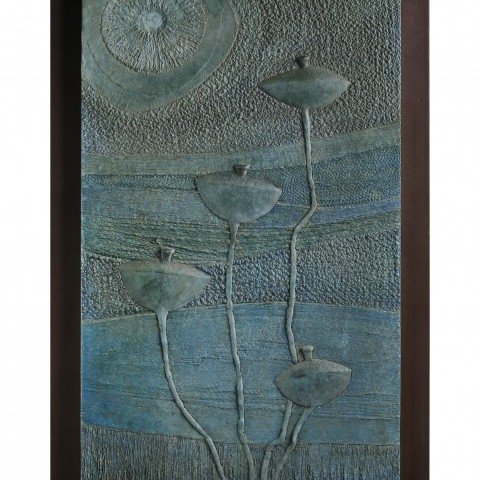Robert V. Fillous worked for almost 50 years in a Cedar Ave. studio where he fashioned art objects. He first used clay and plaster, but he was best known for his voluminous work in aluminum.
He made the three-dolphin sculpture that stands in front of the aquarium in Niagara Falls. Other work can be found on campuses and in buildings across the country.
Mr. Fillous also designed gardens, including the Japanese-inspired grounds at his home in Pepper Pike.
He was born in Cleveland and graduated from John Adams High School. He attended the Cleveland School of Art, now the Cleveland Institute of Art, where he was a special student who studied only sculpture instead of general arts. When he graduated in 1935, he joined his father, sculptor and woodcarver James J., in the Fillous and Rupple Co. on Cedar, west of E. 78th St.
Robert Fillous made many plaster and clay models, based on religious themes, that stonecutters used as models for making statues. When the demand for traditional sculpture slacked off, Mr. Fillous also took on industrial work. He learned how to work with aluminum by making patterns used in manufacturing.
As his expertise grew, he was asked to create artwork for many buildings. He made bas-relief symbols for the Chemistry Building at Ohio State University and an aluminum sculpture for Berea High School. A 7-foot worked titled "Christ the Teacher" is at Borromeo Seminary in Wickliffe. He did a relief for the Brozoria County Court House in Texas.
Mr. Fillous also made a stone sculpture for the Timken Vocational School in Canton and a marine sculpture for the Mystic Aquarium in Connecticut.
He later became interested in working with minerals. He created plants using the minerals as flowers, with aluminum stems, and constructed wooden bases for them. Most of the mineral artwork is in private homes.
Perhaps the most unusual material he worked with was a cross made of nails that were hand-forged in 1326 for the Coventry Cathedral in England. When the cathedral was bombed by Germans in 1940, some nails found in the rubble were fashioned into a cross.
In 1967, Coventry Cathedral gave a similar cross made from the nails to Trinity Cathedral in Cleveland. Trinity member Stella G. White commissioned Mr. Fillous to incorporate it into a processional cross in memory of her husband, the late Judge Charles W. White. Mr. Fillous blended the "Cross of Nails" with a stylized crown of thorns and a staff.
source: The Plain Dealer (Cleveland, OH) - Friday, November 12, 1993

